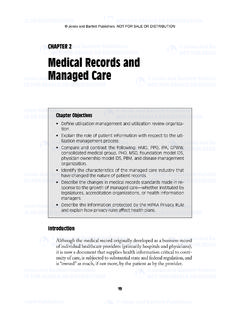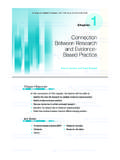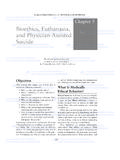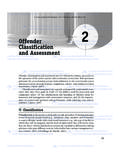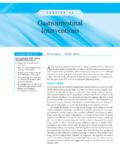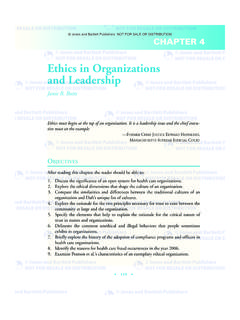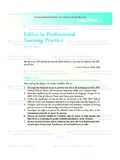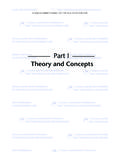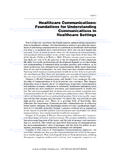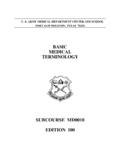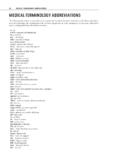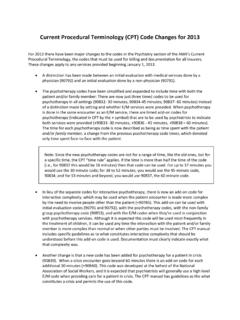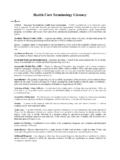Transcription of CHAPTER 5 Medical Terminologies and …
1 :Brogan 6/24/08 6:41 PM Page 103. Jones and Bartlett Publishers, LLC. NOT FOR SALE OR DISTRIBUTION. CHAPTER 5. Medical Terminologies and classification Systems Objectives After reading this CHAPTER , you should be able to: Classify various Medical nomenclatures Differentiate common classification systems Determine the uses of and examine the format of the ICD-9-CM coding system Apply ICD-9-CM coding conventions and principles Review the organization of the CPT coding manual 103. :Brogan 6/24/08 6:41 PM Page 104. Jones and Bartlett Publishers, LLC.
2 NOT FOR SALE OR DISTRIBUTION. 104 CHAPTER 5: Medical Terminologies AND classification SYSTEMS. Main Terms classification system Medical Terminologies Current Procedural terminology Medical vocabulary International classification of Nomenclatures Diseases, 9th Revision, Clinical Systematized Nomenclature of Modification (ICD-9-CM) Medicine (SNOMED). Establishing a standard Medical language is essential for ensuring continuity of patient care. Standard Medical Terminologies and classi- fication systems create uniformity to enhance collection of statistical data and significantly improve the reimbursement process.
3 It is absolutely vital in today's constantly changing Medical environment to have a standard language to communicate healthcare information. Medical Terminologies Medical Terminologies are categorized into nomenclatures, which are systematic listings of the proper names. Disease nomenclatures basi- cally classify and name diseases and other Medical terms. This system of Medical names dates back to the 19th century and has led to the devel- opment of standardized nomenclatures for many Medical disciplines. Standardized Nomenclature of Disease The standardized nomenclature of disease (SND) or basle nomina anatomica was developed by a group of anatomists in Germany and other countries known as the Anatomical Society.
4 The name basle nom- ina anatomica was adopted in Basel, Switzerland, where the annual meeting of the German Anatomic Society was held for the first time in 1895. This nomenclature is a compilation of Latin anatomical terms. Systematized Nomenclature of Medicine Based on the Systematized Nomenclature of Pathology (SNOP) published by the American College of Pathologists in 1965, the Systematized :Brogan 6/24/08 6:41 PM Page 105. Jones and Bartlett Publishers, LLC. NOT FOR SALE OR DISTRIBUTION. Medical Terminologies 105. Nomenclature of Medicine (SNOMED) has been published since 1974 for other specialties.
5 The original SNOP was a four-axis system of terms and codes specifically used by pathologists for the storage and retrieval of Medical data. In 1974, the system was expanded by Dr. Roger Cote into SNOMED, which extended its use to other healthcare settings. In 1977, the SNOMED system was converted to electronic media for Medical information systems, which again expanded its use to other healthcare professionals in addition to physicians. Since that time, the system has undergone several major changes (see Table 5-1) and evolved into the Systematized Nomenclature of Medicine Clinical Terms (SNOMED CT).
6 TABLE 5-1 SNOMED Timeline of Significant Events (College of American Pathologists, 2007). Year Event 1965 SNOMED's earliest origins came in the form of SNOP. 1974 SNOMED contained a broad array of clinical terms crossing all Medical specialties. 1979 The second edition of SNOMED was released and contained 44,587. records classified in six modules and was available in a two-volume set with an alphabetic index. 1993 The third edition of SNOMED was released and provided a multidimensional, structured nomenclature for indexing Medical diagnoses and treatments.
7 1997 SNOMED and the logical observation identification, names, and codes (LOINC) collaborated on the cross-mapping of clinical reference terminology . 1998 SNOMED International gained 6,446 new terms, most of them in the disease module. SNOMED consisted of 156,965 terms and term codes and was comprised of 12 modules, and four new microglossaries were enhanced with this new version of SNOMED. 2000 SNOMED RT, a concept-based reference terminology , became available in wide release, providing the infrastructure for the electronic health record worldwide.
8 2002 SNOMED CT first release is the most comprehensive international and multilingual clinical reference terminology available in the world. 2002 The SNOMED Clinical Terms (SNOMED CT) Spanish edition April 2002. reference terminology subset, was released. This was the first foreign- language edition of SNOMED CT to be published. Source: American College of Pathologists, 2007. :Brogan 6/24/08 6:41 PM Page 106. Jones and Bartlett Publishers, LLC. NOT FOR SALE OR DISTRIBUTION. 106 CHAPTER 5: Medical Terminologies AND classification SYSTEMS. SNOMED Reference Terms (RT) was developed as part of a col- laboration of the American College of Pathologists with Kaiser Per- manente in a joint effort to change the structure of SNOMED to reflect advances in Medical informatics and computer science.
9 SNOMED CT, first released in January 2002, combined SNOMED. RT's strengths in the basic sciences, laboratory, and specialty medi- cine with the richness of the United Kingdom's work in primary care. The end result was a comprehensive and precise clinical refer- ence terminology that provides unsurpassed clinical content and expressivity for clinical documentation and reporting. This system is widely used as a standardized vocabulary for physicians and other healthcare professionals. Logical Observation Identifiers, Names, and Codes The logical observation identifiers, names, and codes (LOINC) was developed by Regenstrief Institute, Inc.
10 , in 1994. This system of clin- ical Terminologies was designed for point of care services conducted via electronic transactions. The system was created as a response to the demand for electronic movement of clinical data from laboratories that produce the data to hospitals, physicians' offices, and payers who use the data for clinical care and management purposes. Highlights of the LOINC (Regenstrief, 2007) system include: The LOINC laboratory terms set provides a standard set of uni- versal names and codes for identifying individual laboratory and clinical results.
